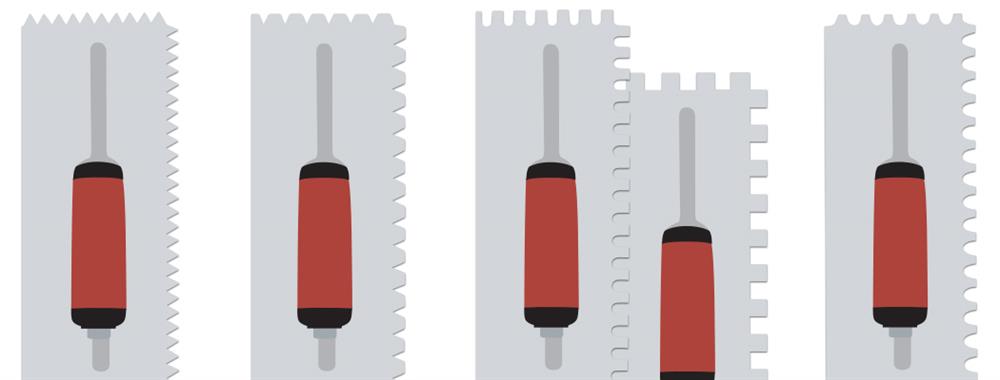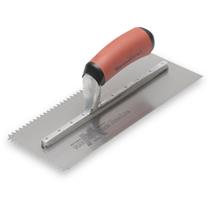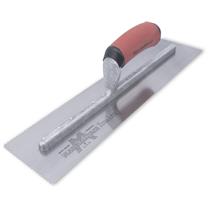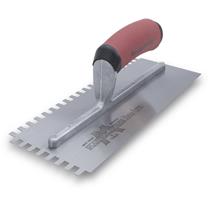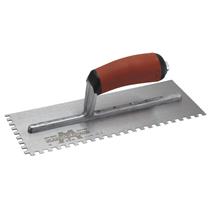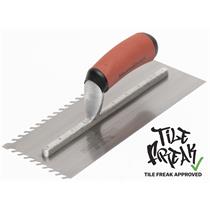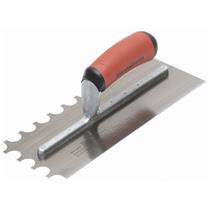Whether you are installing small mosaic tiles, subway tiles, or large natural stone tiles, notched trowels are essential tools for setting tiles into place. Notched trowels scoop thin-set, a cement-based mortar adhesive, and spread it over floors and walls. The distinctive notches on the sides of the trowel create an even base of ridged mortar. When a tile is placed, the mortar compresses to provide a complete bond between the tile and the wall/floor. This bond will keep tile in place for years.
When it comes to picking a notched trowel for you project, how do you know which is the right one? Do you need different notched trowels for walls versus floors?
This guide walks you through the differences between and the ideal uses for the five most common notch shapes.
- V-Notch
- Flat V-Notch
- Square/U-Notch
- Slant Notch
- Elliptical, or Deep U-Notch
1. V-Notched Trowels
What Kind of Tile: The V-Notched Trowel is best for installing small wall tiles like mosaic backsplashes, detail tile work, and any lightweight glass or ceramic tiles up to six square inches.
Why: Its sawtooth pattern blade leaves just the right amount of thin-set to avoid over-smearing large amounts of material that would squeeze out through the joints between tiles.
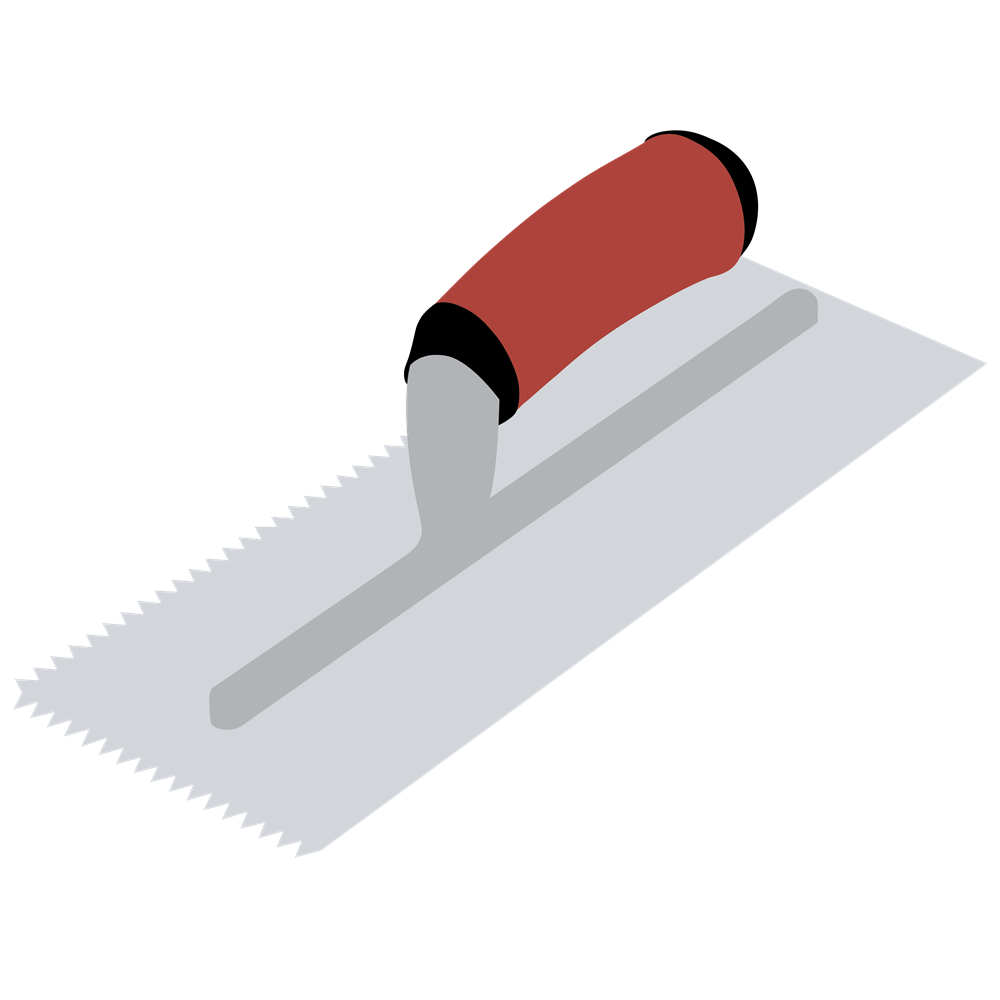
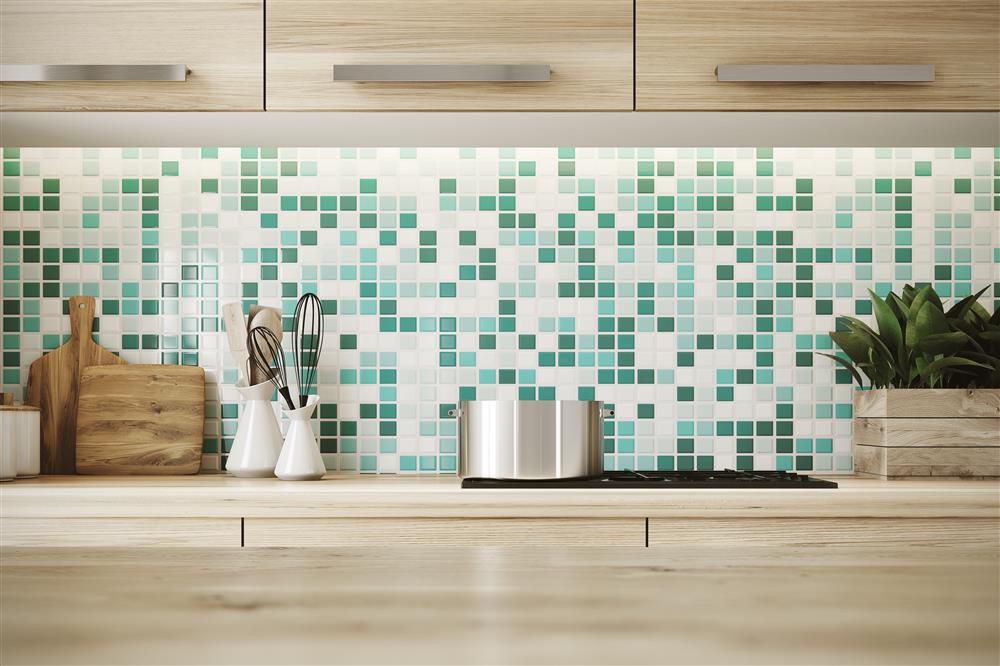
2. Flat V-Notched Trowels
What Kind of Tile: The Flat V-Notched Trowel is ideal for heavier, small wall tiles like natural stone mosaics or glazed ceramic up to six square inches
Why: The flat V-shape allows you to put more thin-set down, which provides a stronger grip for the tile to hold onto.


3. Square Notched Trowels and U-Notched Trowels
What Kind of Tile: Square Notched Trowels and U-Notched Trowels are the most common notch shape and are used with most wall and floor tiles like metal tiles, porcelain, ceramic, larger mosaic meshes, or natural stone and cement tiles up to 16 square feet.
Why: Both shapes create neat rows of ridges with valleys in between them. Square Notched Trowels create ridges with a flat top, and U-Notched Trowels form founded ridges. When a tile is set into place, these ridges flatten out and fill the valleys, providing an even coverage for a stronger, more complete bond to the wall or floor.

For an even stronger, longer lasting bond, back butter the tile before setting it into place. To do this, scoop a bit of thin-set with your trowel and “butter” the back of the tile with the trowel’s flat edge until there’s an even, thin spread of thin-set.

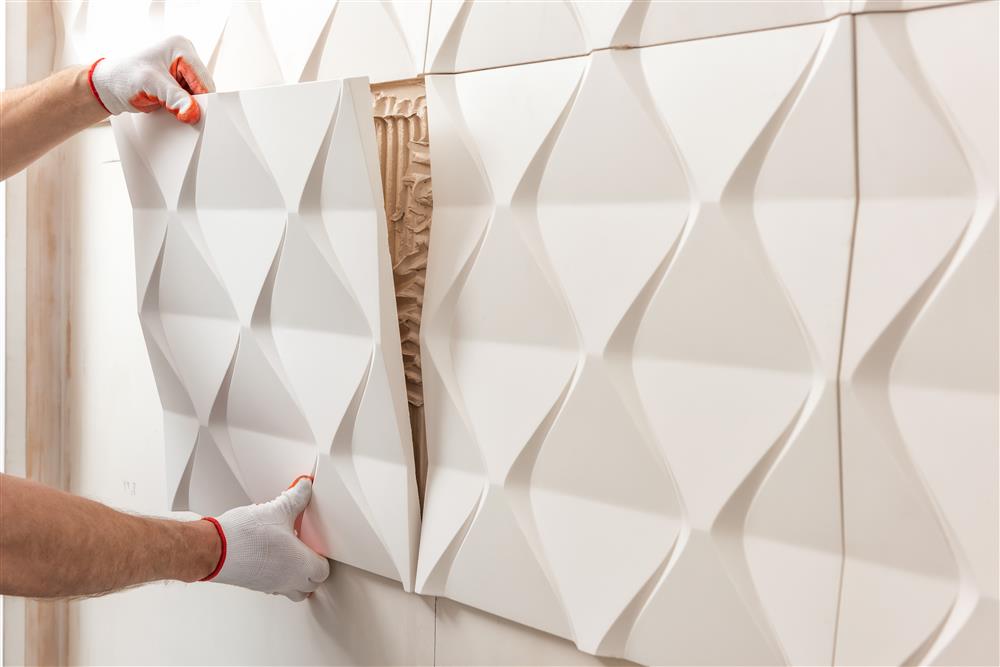
4. Slant Notched Trowels
What Kind of Tile: Slant Notched Trowels, like the MARSHALLTOWN LayFlat™ Notched Trowel are best for some wall and floor tile applications like thin medium to large format porcelain tiles.
Why: These trowels create unique, wave-like ridges that are already partially collapsed, promoting better air evacuation.

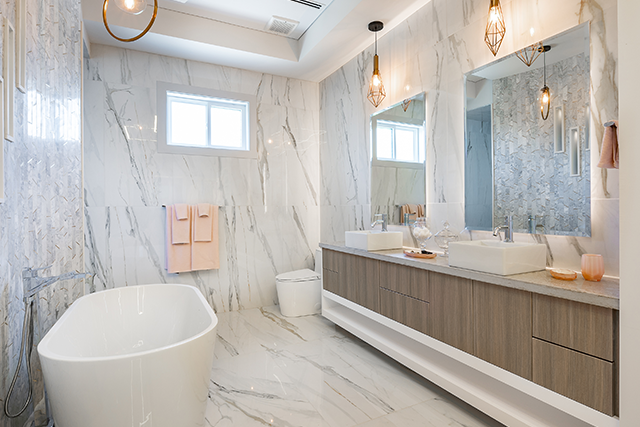
5. Elliptical Notched Trowels and Deep U-Notched Trowels
What Kind of Tile: The Elliptical or Deep U Notched Trowel are essential for laying heavy, massive slabs of natural stone, such as granite or marble. Because of the size and weight of these tiles, this notch shape should only be used for floor tile installations.
Why: These trowels distribute the most thin-set.

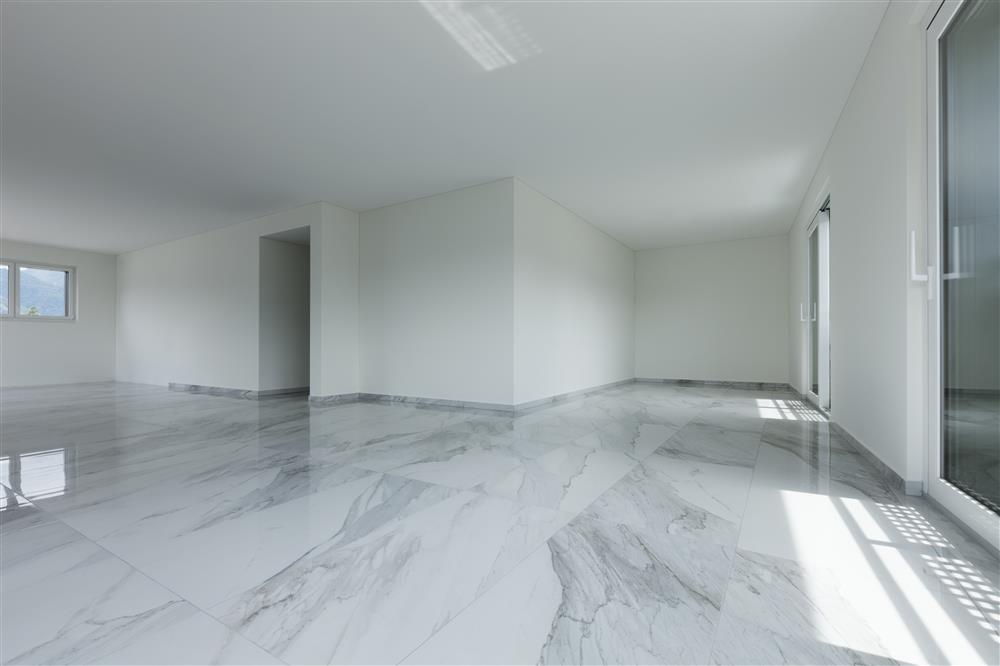
Why Notch Shape and Size Matter When Tiling
Most tile manufacturers will have both notch shape and size recommendations written on the box. There are three reasons why knowing the right notch shape and size is crucial for your tiling project.
1. Control: Choosing the right notch shape can prevent over-smearing, which can make your tile application weak and messy.
2. Long-Lasting: Using the correct notch size and shape will help your tiles last longer. Larger, heavier tiles need notches that leave behind a good amount of thin-set, while smaller, lighter tiles do not.
3. Avoid Mistakes: Using the wrong amount of thin-set or the wrong notch shape will negatively affect the outcome of your tiling project. Tiling projects are not cheap, so ensure your tile stays secure for a long time by choosing the right tools.
Whether you are installing ceramic, porcelain, or natural stone tiles, all you need is the right amount of thin-set and the right notched trowel to achieve long-lasting, professional DIY results.
